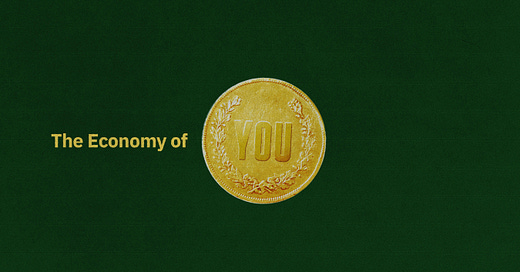Upgrade to paid to play voiceover
At some point in the process of devising a tech satire, you might come up with an idea like this:
What if every person in the world had their own currency? (No, no, no. Not like everyone had money. This isn’t a utopia.) I mean, like everyone had a token or a coin of their own that other people could buy and sell and maybe pay with. If you wanted to hang…
Keep reading with a 7-day free trial
Subscribe to The Generalist to keep reading this post and get 7 days of free access to the full post archives.


